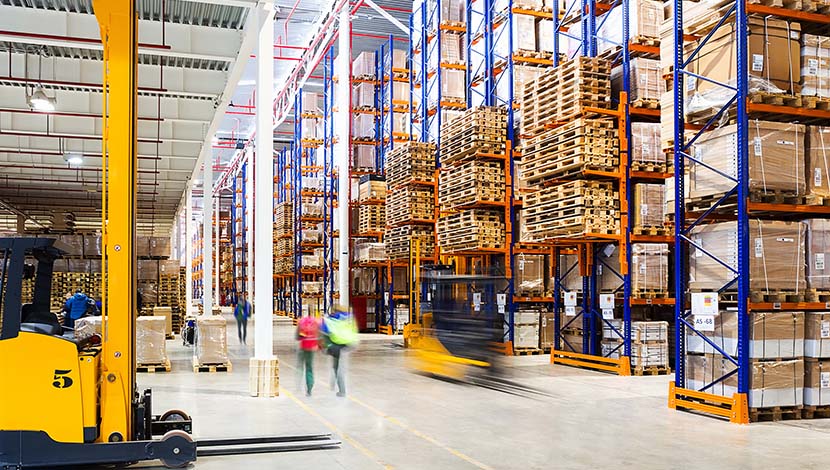In the latest disruption event, we added barriers and distance between ourselves – throwing a wrench into the works of the global supply chain. Challenges popped up from the assembly line to the retail shelf. Yet, companies overcame these obstacles in new and exciting ways.
We talked with several organizations for this edition of Navigating Disruption and unpacked how a global crisis impacted their supply chain.
Demand Volatility
It’s economics 101. In a perfect world, supply and demand would be equal. In times of crisis, however, buyer preferences can skyrocket or nosedive overnight. A president and CEO of a regional commodities and trading company with over $200 million in sales told us about their experience with both ends of the spectrum, especially with one of the company’s chief products, sunflower seeds.
“There have been spikes in demand curves that we’ve never seen … We had certain items where we typically have six months of packaging on hand to build it, and that evaporated in two weeks on one item, and so now we’re out of stock of packaging, and we can’t produce the item. We’ve also had some divisions where demand goes way down.”
They reiterated the need for flexibility and communication both upstream and downstream: “My teams have managed it really well through communication to our distributors, to our customers, in changing our lead times, making sure they knew when they were going to be able to get a certain product.”
Channel Switching
Indeed, this disruption took a huge toll on food products and their supply chains. Calling on the CEO of a potato farming company with operations in 11 states, we learned about the massive lateral shift in demand they witnessed.
“You had one channel – food service – dry up, but then with retail there was heavy demand. So, we had to do some things and some gymnastics and react to that. People are still going to eat, but they’re sourcing their food differently.”
They said that led to a surging effect as inventory became backed up in the chain.
“When everyone was pantry loading early on in this, we had retailers calling us, big retailers saying they need this astronomical amount of product, and we need it tomorrow, and any way you can get it to us, do that. So, for a couple of weeks there was a lot of demand, but the supply chain wasn’t capable of that demand that quickly, so it was surging back and forth.”
Noting the contrast between international food supply chains and more regional goods, the CEO of an outdoor furniture manufacturer with $14 million in sales across the U.S. talked about their experiences with mild supply chain disruption.
“Most of our supply chain is in the United States. 99% of it. And one of the companies in Pennsylvania was shut down so we couldn’t get that part for our product, but they were back up and running before we really had a problem. Otherwise, I don’t think there was any disruption … I’d like to think because it’s the US supply chain, which has been intentional, that we didn’t have problems like the food industry getting things from overseas.”
Finding Space for it all
In addition to the problem of shifting demand, the farming industry leader noted warehouse space difficulties.
“Just the sheer volume of potatoes I’m talking about in terms of inventory management and the logistics to that, we had challenges.”
The same thing was felt further down the chain, as our source in commodities and trading commented.
“When I think physical space, I think inventory – so both our raw goods and also our finished goods … We have a lot of inventory, and we run out of room; we’re trying to find more warehousing space for these raw goods or finished goods, and that’s been challenging.”
New Means of Getting to the Customer
Even during the current ongoing disruption, companies are looking ahead toward new ways of getting goods into the hands of their customers. The CEO of the outdoor furniture and design company we spoke with was optimistic about online channels.
“We were working on growing our direct sales, which is our online sales, and we really started something different in 2019. So that was really good timing because [what] we are seeing, we built on that in 2020. We started off with more resources towards direct sales and that’s what people are doing – they’re stuck at home and they’re buying things online.”
Regarding new delivery methods, they floated the possibility of having local collection and delivery boxes for everything from food to packaged goods.
In terms of supply chain management, it’s anyone’s best guess whether this latest disruption will change best practices within any particular industry. All our sources focused on the idea of staying flexible and maintaining communication along the entire length of the chain.
We hope you found valuable insights in this article. Read more from our Navigating Disruption series here: https://prime46.com/category/navigating-disruption/
Thanks,
PRIME46
Are you a business leader seeking to adapt, change and grow following a business environment disruption? Let’s talk about how PRIME46 research and strategic advice can help.


